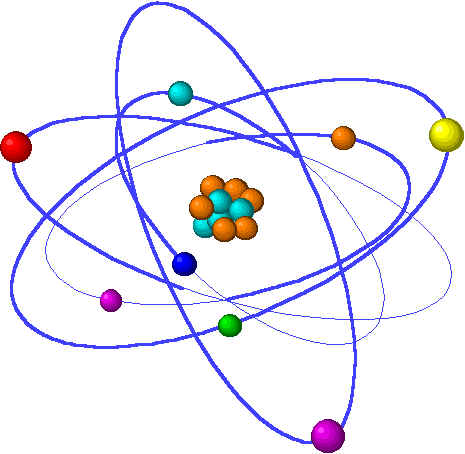The physical universe often appears overwhelmingly solid and unchangeable. Let us look at how solid it really is and develop a feeling for the opportunity to change it.
Before modern physics objects we could feel and touch were just considered to be solid, but when science started to dig deep into the structure of things, we learned that those material objects, like the hammer to drive in a nail, were indeed finely structured into molecules and atoms of the elements it was built from – mostly iron in case of the hammer.
For a long time, the atom seemed to be the smallest building block, strongly indicated by the choice of the word atom, the Greek word for ‘indivisible’.

But in the late 19th and early 20th century, it was discovered that the ‘atom’ actually had a structure and we all know the model of an atom of the nucleus consisting of protons and neutrons in the middle, orbited by one or more electrons.
Unfortunately, this picture, as we learned in school and how we probably still imagine an atom, is very misleading because it shows the particles as solid balls of something, and we assumed that it is something solid. This turned out to be an incorrect image as, first, these little electron-balls were not really balls that circled the nucleus like the moon circles the earth, but something that sometimes appeared to be a particle but at other times it behaved as a wave. Second, the scale was way off – the diameter of the whole atom is 10- to 100-thousand times larger than the nucleus. To give an idea of that relationship imagine a sphere 20 miles in diameter – then the nucleus would be a baseball.
That means that an atom is mostly empty space. Apply that image to the five-pound hammer when you miss the nail and hit your thumb. That does not feel like a lot of space (the hammer) hitting another lot-of-empty -space (your thumb). Yet we still consider objects as solid.
If we follow along with the development of science since the early 20th century, the situation becomes even more unreal. First, a structure was found in the formerly solid building blocks of the nucleus – the protons and neutrons. With these building blocks of the nucleus, the quarks, we have entered an area where direct observation of the pieces involved is no longer possible. The only way to make observations that allow conclusions about the inner workings of an atomic particle was to throw those particles at each other with such a high force that they broke apart and then look at the fragments flying out of that collision. The second, and current, development was the investigation of the structure of those quarks. The final word on what that might be is not out yet, but one of the leading theories is that they consist of very small oscillating strings – you might have heard the word string theory.
What it all boils down to is that there is nothing solid in the ‘stuff’ that we consider solid. It’s mostly empty space and some strong force fields concentrated in the middle and weaker ones on the outside. There does not seem to be a principal difference between the air we walk through without even noticing and the wall that stops us cold.
This is science as it is now practiced and taught in universities and research centers. It is simplified with all the math taken out, but hopefully, these facts shake up your sense of reality and allow you to see that ‘reality‘ is not chiseled in stone and definitely can be changed.
Just in case you would like to look into this a bit more, there is this great TED talk by Professor Brian Greene, explaining – without all the math – the basic ideas behind this string theory…
